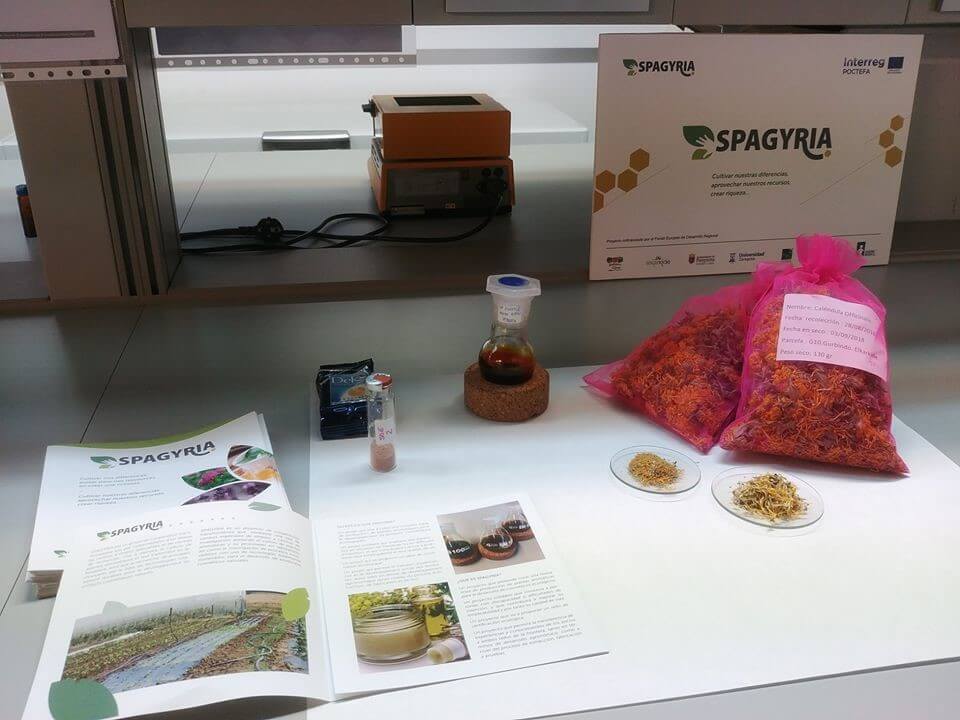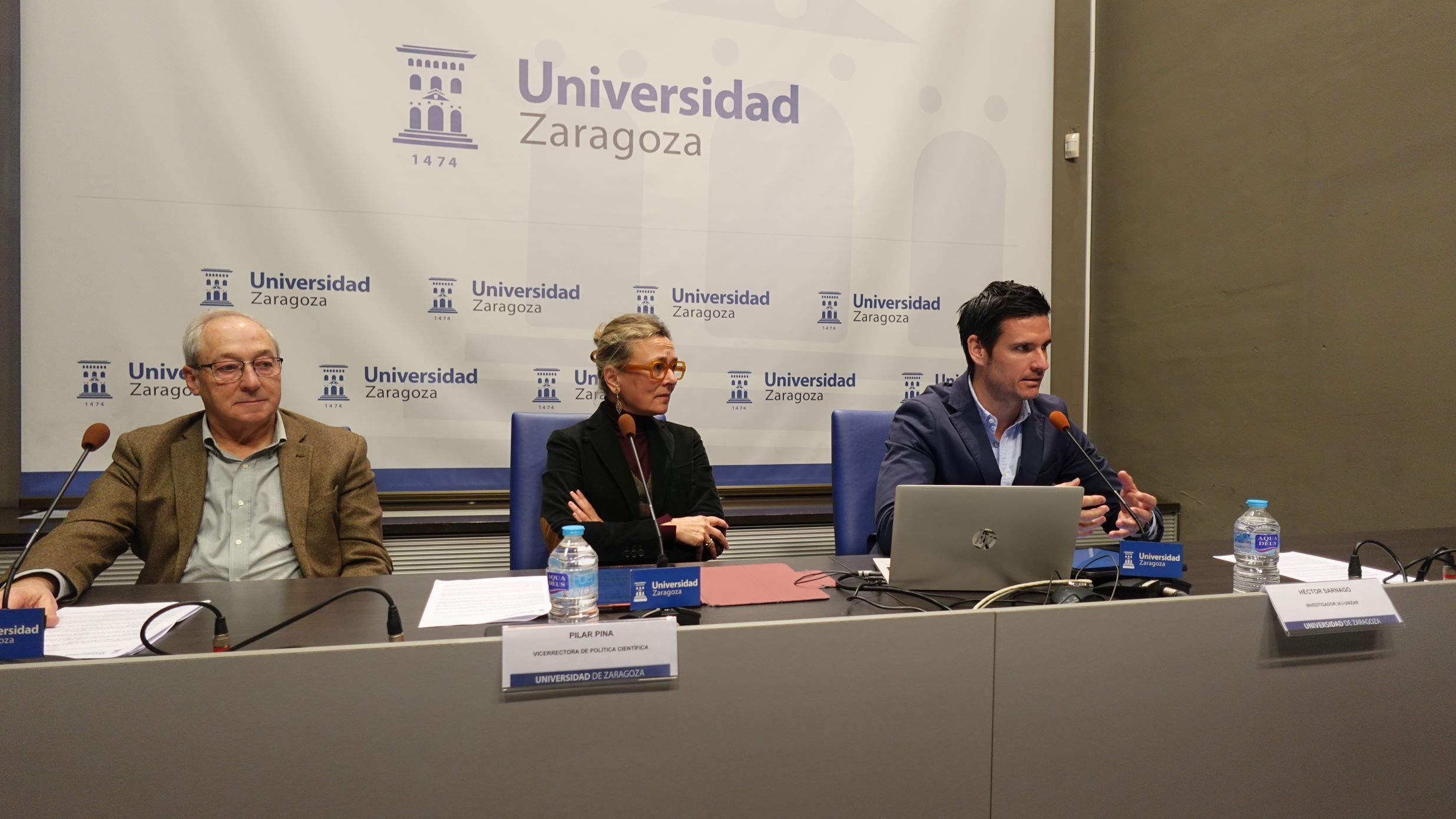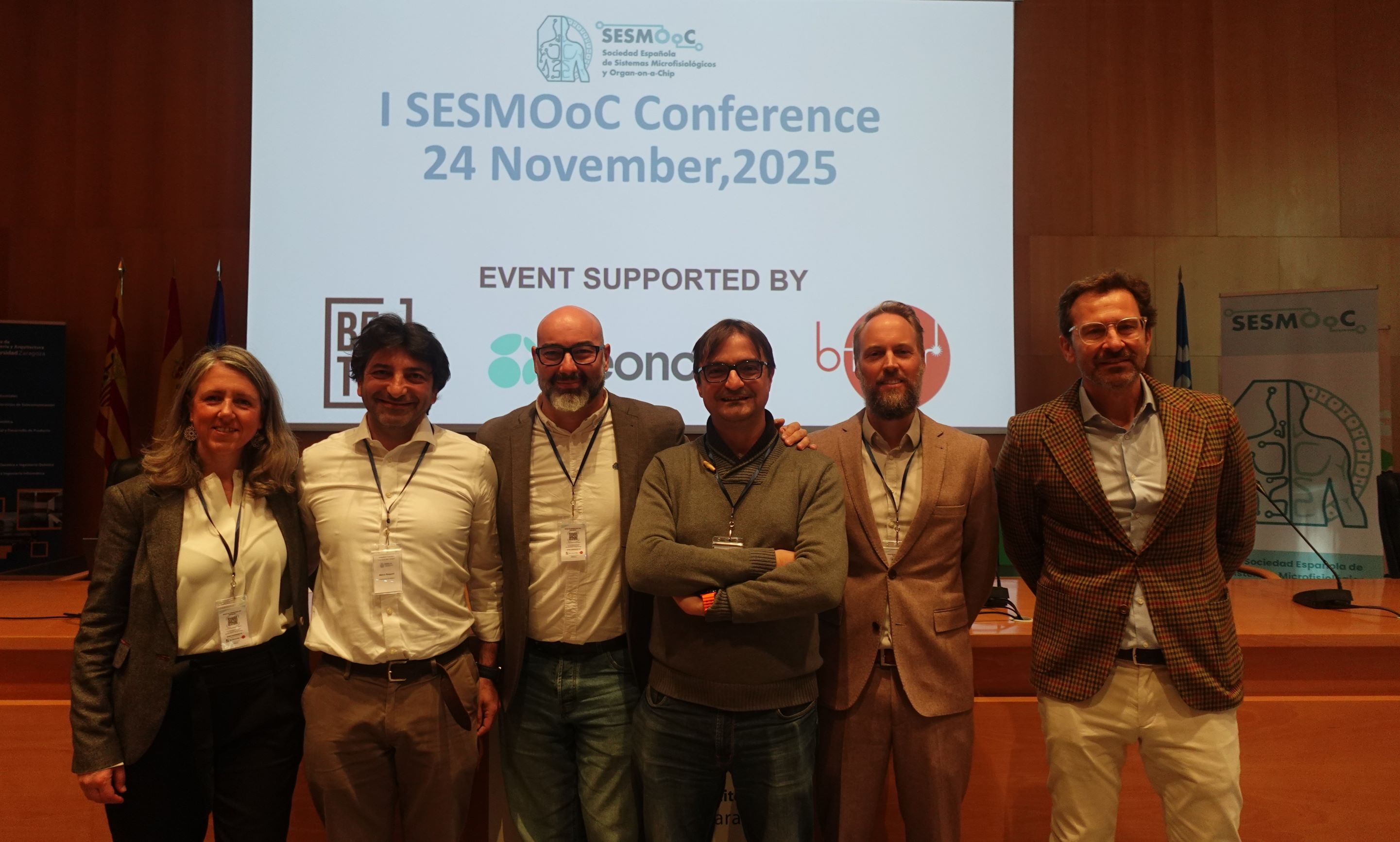
Spagyria is a cross-border cooperation project. For just over four years it has joined special employment centers, research centers, institutions and companies to achieve the cultivation of aromatic plants and their processing in the laboratory, as well as the research of innovative processes with totally sustainable technologies to create natural cosmetic products, with ecological certification, according to a new certifying standard.
An Interreg-POCTEFA project, co-financed by the European Regional Development Fund, in which the GATHERS research group of the Aragon Engineering Research Institute (I3A) has participated, together with three special employment centers (Valentia, Elkarkide and Jardins de Girou), two municipal corporations (Huesca and Pamplona Town Councils) and two research centers (University of Zaragoza, through the GATHERS group and the MEDES in France). Cooperation, solidarity and innovation for the sustainable exploitation of aromatic and medicinal plants that began in 2018 with a pilot plantation that included eight carefully selected plant species.
Special employment centres, dedicated to social inclusion activities, have studied the effect of soil and climatic conditions on the totally organic cultivation of aromatic plants containing active substances intended to provide an effective cream. Formulated with extracts from some of these plants, which were selected for their proven activity, especially of antioxidant type, the cream is subjected to effectiveness studies in healthy people, who participate voluntarily, studies carried out by the MEDES research centre.
CO2 and its flow rate
The GATHERS research group has been in charge of carrying out research on crops and extraction and separation of active components.
After all the analyses, the effectiveness of the technologies that use supercritical CO2 for the proposed objective has been verified and the optimal conditions for both extraction and fractionation have been determined, taking into account yields as well as content of certain antioxidant substances. Once these optimal conditions are known, as the research team explains they have been applied for the production, with the same pilot plant, of significant quantities of the extracts or fractions chosen for the manufacture of the cream.
The vegetable material, from which the active components for the cream will be obtained, requires, in addition to the proper care of any crop, a correct handling and treatment so that it would reach the extraction processes in optimal conditions.
One of the essential conditions to efficiently carry out processes that use supercritical CO2 technologies is that the starting plant material would have an adequate quality attending to both its water content and its correct processing. For this reason, the project contemplated the construction of dryers at the headquarters of the special employment centres.
They represent three different construction and management models that will remain in the facilities of those centres and that will make it possible to expand the areas in which they were working until now. With these additional infrastructures, a complete and new line of work is created for the Special Employment Centres.
Each centre has had the support of engineers and technicians specialized in the design and construction of infrastructures that are respectful with the environment, sustainable and energy efficient. Besides, they are also adapted to the needs of the project's research line as well as for future applications and studies.
In developing the Spagyria project, other centres and companies have also been involved. Among them, the Aragón Agrifood Research and Technology Centre (CITA) and the Karicia cosmetic laboratory. The San Jorge University and the IUI Mixto Agroalimentario de Aragón (IA2) have also collaborated. HT Publicidad has carried out the tasks of dissemination of the project.




